
Over the past 75 years the Fulbright Program has given more than 400,000 students, scholars, teachers, artists, and professionals the opportunity to create connections in a complex and changing world.
Fulbright brings these opportunities to life through partnership. Together with more than 160 countries and U.S. Embassies, 49 Fulbright Commissions, and numerous partner organizations, the Fulbright Program works to shape a more positive vision for our communities and our world. Learn more in this article about the history, activities, and outstanding alumni of the Fulbright Program and the Fulbright commissions. Click here to read more about the partner organizations that help fulfill the Fulbright Program’s mission by expanding the program’s reach and building diverse networks in a variety of disciplines and fields.
Making History with Fulbright Commissions
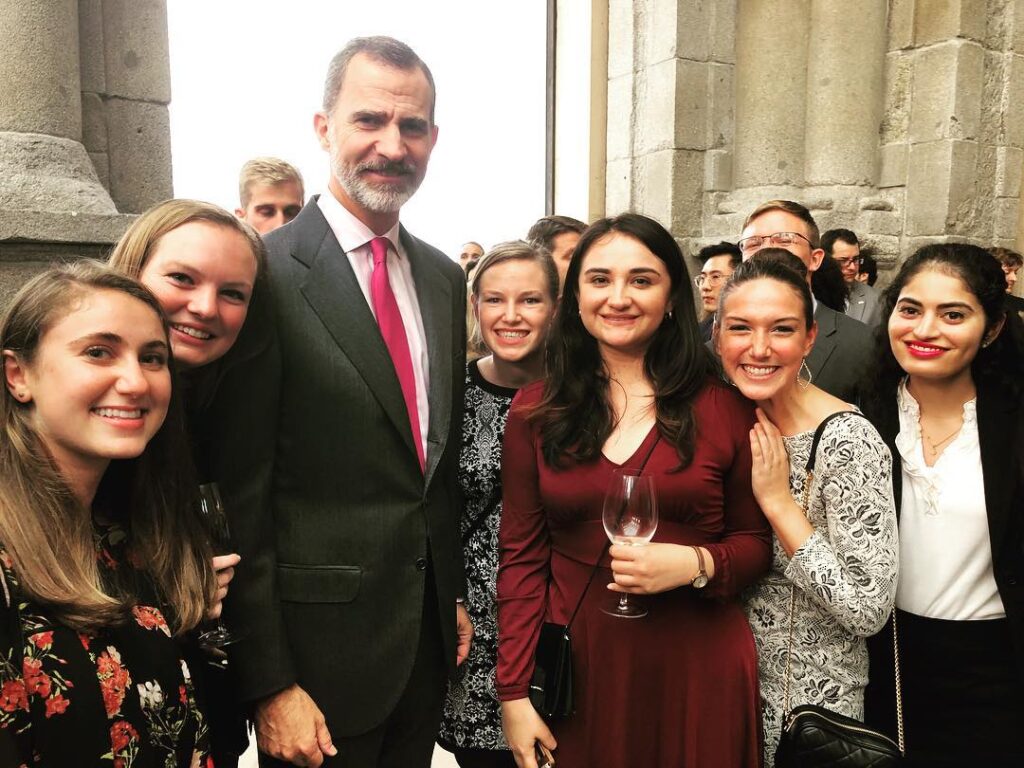
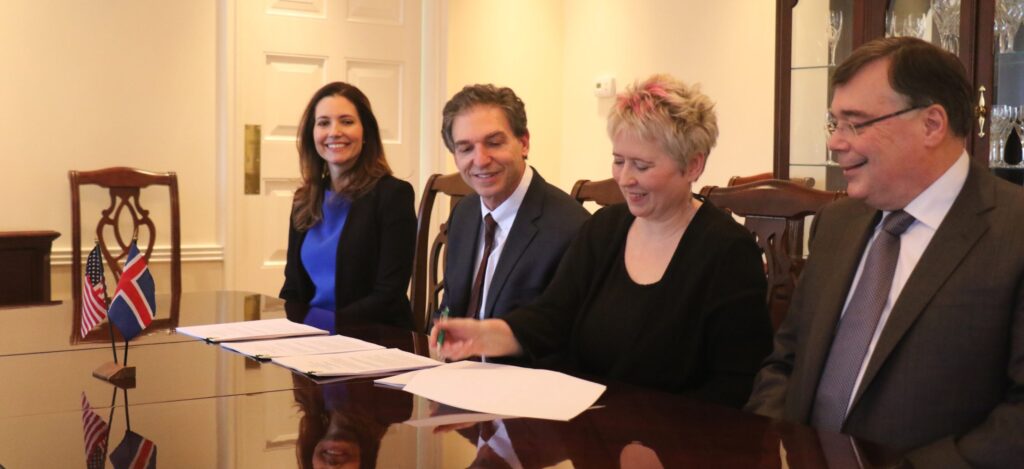
Right photo: The Fulbright Program has brought organizations and governments together through shared interests. In 2015, the Fulbright Commission in Iceland and National Science Foundation signed an agreement to support research in the Arctic region, and about cybersecurity and critical infrastructure through Fulbright awards. The signing event was hosted by the Ambassador of Iceland to the United States, Geir A. Haarde (far right), and Assistant Secretary for Educational and Cultural Affairs, Evan Ryan (far left).
Fulbright Commissions: Bilateral Partnerships
The Fulbright Program’s success comes from its sustained commitment to international bilateral partnerships. The most notable examples of these are Fulbright commissions, a group of 49 partnership organizations, most of which are funded jointly by the United States and the partner government. These commissions are responsible for exchanges in their countries. Among their duties, they recruit and nominate candidates for fellowships; designate qualified local educational institutions to host Fulbrighters; engage alumni; support incoming U.S. Fulbrighters; and, in many countries, operate an information service for the public on study in the United States.
Explore Fulbright Commissions Around the World
In recognition of the 75th anniversary, Fulbright commissions and U.S. embassies and consulates are hosting Fulbright Days, which celebrate the impact of these important partnerships through virtual and in-person events, webinars, digital exhibitions, and more. Highlights of each region are listed below.
Africa


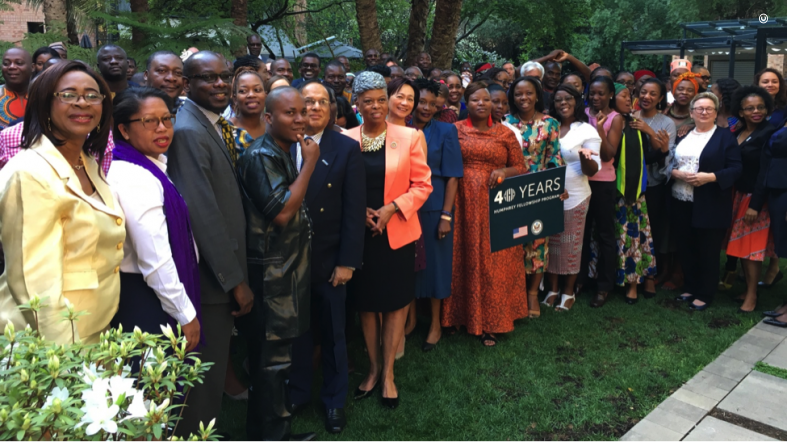
Center photo: Jenné Nurse, 2018 Fulbright U.S. Student to South Africa, taught her local students as an English Teaching Assistant.
Right photo: Hubert H. Humphrey Fellowship Program alumni celebrated 40 years of the program at a conference in South Africa in 2018. The program provides ten months of non-degree academic study and related professional experiences in the United States.
South Africa
Since 1953, the Fulbright Program has connected the people of the United States and South Africa through the Fulbright U.S. Student, Foreign Student, U.S. Scholar, and Visiting Scholar Programs. The program has supported outstanding South African leaders, including Guy Berger, Director for Freedom of Expression and Media Development at UNESCO; Makaziwe Mandela, businesswoman and Director of the Nelson Mandela Foundation; and Vasu Gouden, Founder and Executive Director of the African Center for the Constructive Resolution of Disputes (ACCORD).
This connection was strengthened by The South African NRF-IIE Agreement, a formal partnership between the Fulbright Program and the National Research Foundation (NRF), South Africa’s research and science development agency which funds the development of critical research infrastructure. This partnership supports South African doctoral students through the Fulbright Foreign Student Program, and is aligned to the NRF’s Global Knowledge Partnerships Programme. It will help increase the number of South African PhD-qualified faculty that fully represent South Africa’s diverse demographics.
“This historic agreement with the National Research Foundation underlines the strength of the U.S.-South Africa partnership in Fulbright exchanges. It reflects our shared commitment to expanding higher education opportunities for diverse populations, particularly in the fields of science, technology, engineering, and mathematics. This 75th anniversary year of the Fulbright Program reminds us of the enduring importance of international exchanges in building bridges of understanding among peoples.” — Matthew Lussenhop, Acting Assistant Secretary of Educational and Cultural Affairs
East Asia-Pacific
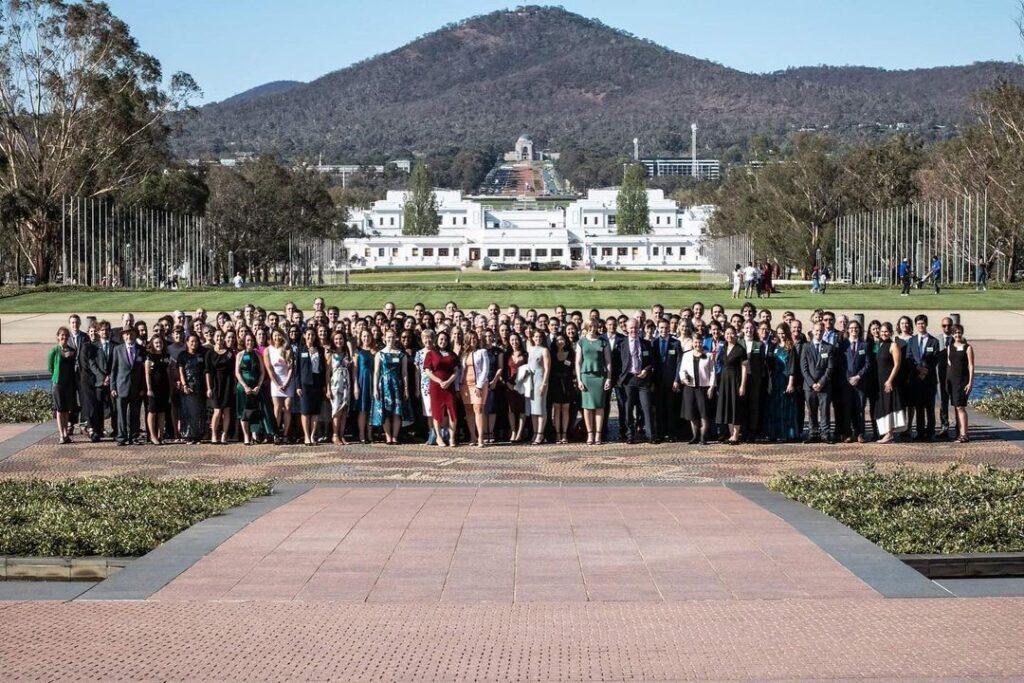

Right photo: A selection of Fulbright Australia’s dynamic alumni.
Australia
Australian-American Fulbright Commission
The United States Educational Foundation was created in 1950 to support American and Australian students, scholars, and professionals. The Foundation, based in Canberra, was run by a small Australian secretariat and guided by a binational board of directors. The first Australian Fulbrighters departed for the United States in 1950, and American Fulbrighters departed for Australia in 1951.
Now known as the Australian-American Fulbright Commission, the Commission forges new ground through partnerships; provides a rigorous, equitable, and professional environment for all scholarship applicants and recipients; and develops long-lasting, productive bilateral connections between Australia and the United States. Fulbright Australia has supported outstanding leaders, including Jillian Banfield, earth scientist and 1999 MacArthur Fellow; Peter Shergold, Chancellor of Western Sydney University; and Jo Lawry, acclaimed jazz singer.
“The Fulbright Program takes pride of place in the uniquely close, long standing relationship between the United States and Australia. As the very first formal treaty signed between our two countries, Fulbright has long been acknowledged as the soft power cornerstone of a critically important and productive bilateral partnership, and because of this the program has enjoyed more than 70 years of generous, growing support from government, industry, and the higher education sectors.
Recently, the social impact fostered by Fulbright has seen heightened interest from philanthropic institutions that have enabled us dramatically to increase the number and value of scholarships offered to both Australian and American candidates. In particular, the Fulbright Future Scholarships, funded by The Kinghorn Foundation, have provided nearly 200 fully-funded study and research opportunities in three short years. These awards stand out for their focus on innovative and tangible impacts to health, technology and wellbeing, which will foster practical, highly beneficial collaborations and networks between Australia and the United States for many years to come.
In this, the 75th anniversary of the Fulbright Program, we’re proud that this vision continues to grow, thrive, and enhance the sense of ‘mateship’ between our two nations.” — Thomas Dougherty, Former Executive Director of the Australian-American Fulbright Commission, U.S. Ambassador (ret.)
Europe-Eurasia

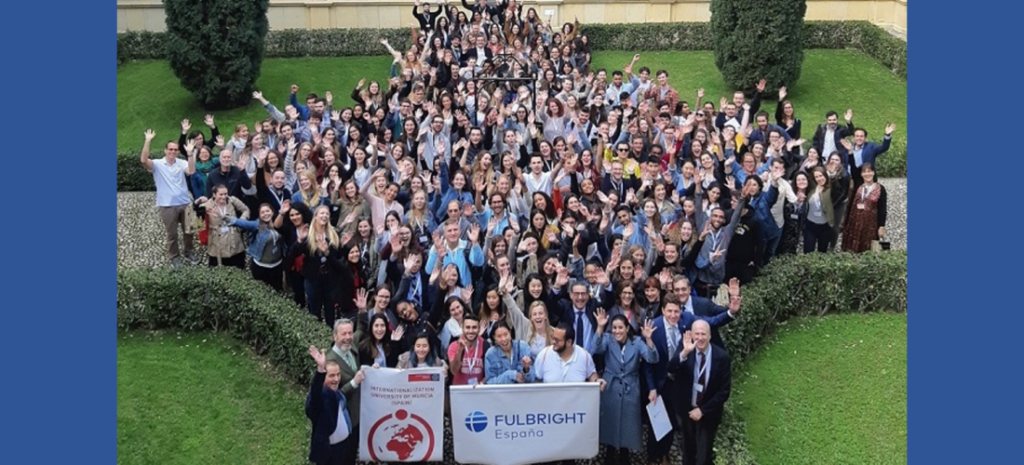
Right photo: Fulbright Spain participants and staff.
Spain
The Fulbright Commission in Spain
The Commission for Cultural, Educational and Scientific Exchange between Spain and the United States was established in 1958 by executive agreement between the two countries, and is now known as the Fulbright Commission. The agreement was renewed in 1994, expanding the objectives of the original Commission and underlining its independence.
In addition to support and funding from the governments of the United States and Spain, private sponsors include Coca-Cola, El Corte Inglés, IE Business School, the International Institute in Spain, the Iberdrola Foundation, the Ramón Areces Foundation, The Mapfre Foundation, Grifols, and The New York Film Academy. Fulbright Spain has supported outstanding leaders, including Ángel Cabrera, President of the Georgia Institute of Technology and former President of George Mason University; María del Mar Cabra, a 2017 Pulitzer Prize winner for investigative data journalism; and José Vicente Siles, the first Spanish engineer awarded the Lew Allen Award for Excellence by NASA.
“This has been a year like no other in which our grantees were faced with the unprecedented challenge of completing the objectives of their Fulbright award during a worldwide pandemic. Despite the challenges, it was heartening to witness how the restrictions limiting travel between regions actually helped to foster long-lasting relationships between the grantees and their local communities, and heightened opportunities for cultural exchange on a local level. Both student grantees and scholars alike described their experiences as engaging, formative, enriching and even life-changing, and we are proud of their accomplishments and tremendous growth!” — Alberto López San Miguel, Executive Director of Fulbright Spain
Middle East and North Africa
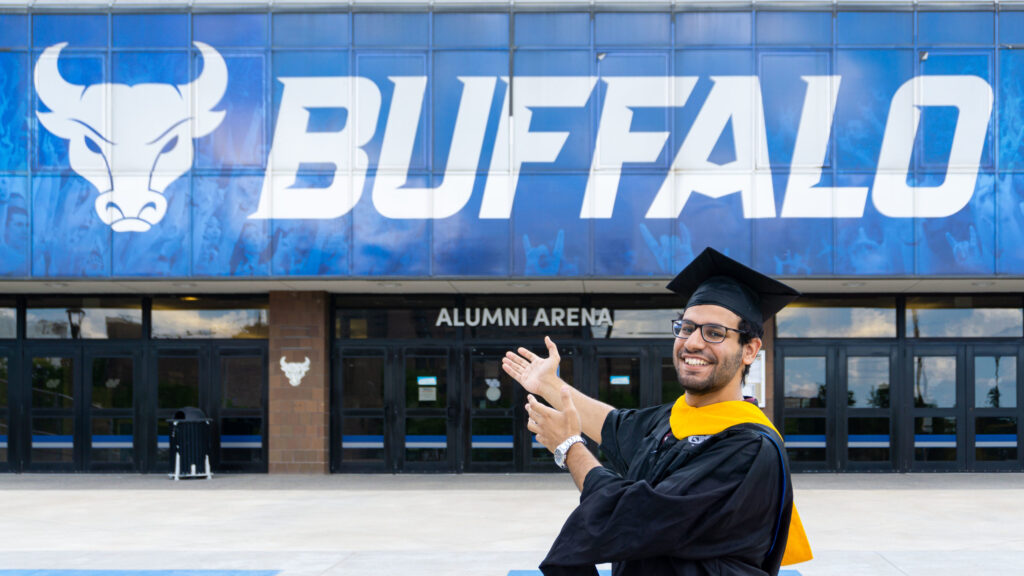
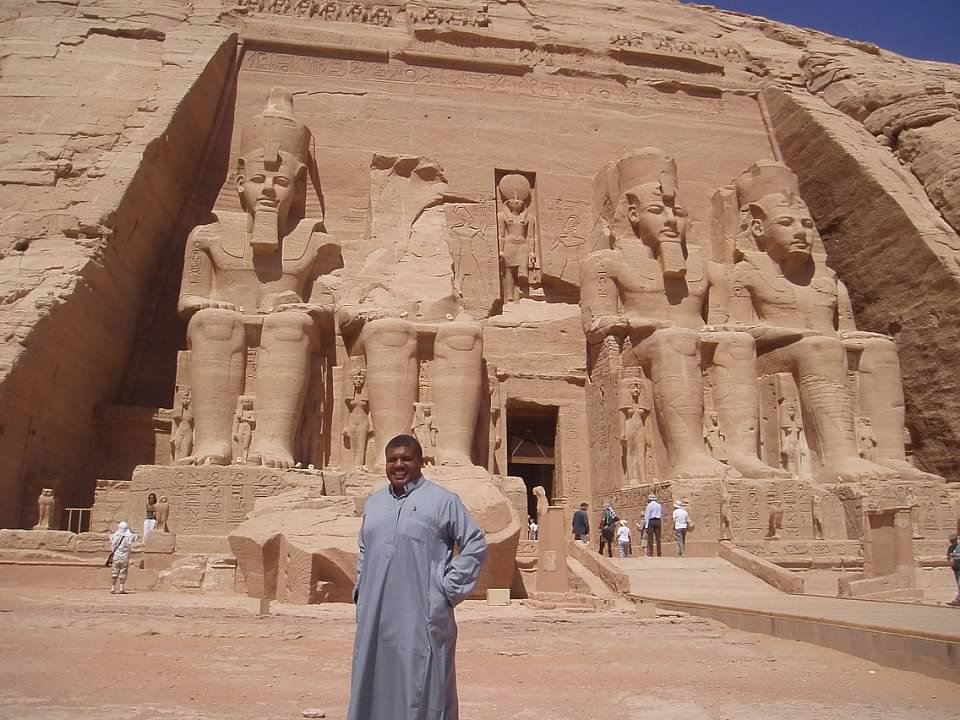
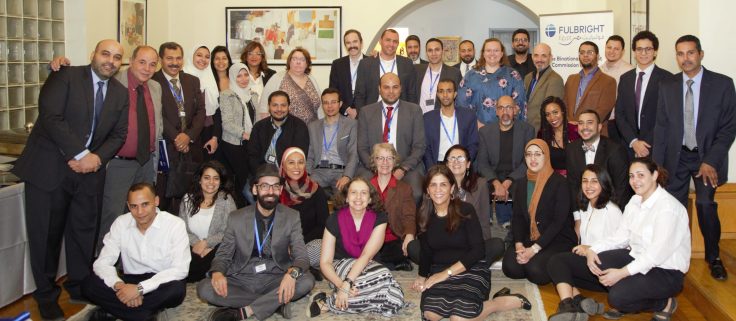
Center photo: Everette Penn, 2004 Fulbright U.S. Scholar to Egypt, compared Egyptian and United States juvenile justice in his lectures at Cairo University.
Right photo: Fulbright Egypt hosts roundtable discussions for Fulbright alumni and friends of the Commission, including this 2019 gathering of Fulbright U.S. Scholars in Egypt.
Egypt
The Binational Fulbright Commission in Egypt
The Binational Fulbright Commission in Egypt was established in 1949, through a protocol between the Egyptian Ministry of Foreign Affairs and the U.S. Department of State, and is the oldest and largest Fulbright program in the Arab world. Since 1949, more than 8,000 Fulbrighters have completed exchanges between Egypt and the United States, including notable alumni such as Boutros Boutros-Ghali, the sixth Secretary-General of the United Nations.
“The Binational Fulbright Commission in Egypt’s motto has been ‘a network of agents of change.’ Through 72 years of partnerships with the U.S. Department of State’s Bureau of Educational and Cultural Affairs (ECA), the Egyptian Ministry of Foreign Affairs, the Egyptian Ministry of Higher Education, the U.S. Embassy in Cairo, the Supreme Council of Egyptian Universities, and USAID in Egypt, we have supported more than 7,000 Egyptian Fulbrighters who have traveled to the United States and 1,000 U.S. Fulbrighters who have come to Egypt. Fulbright alumni represent the diverse cultural and regional richness of the two countries, and have had a remarkable impact on the academic and professional landscape of both the United States and Egypt.” — Dr. Maggie N. Nassif, Executive Director of Fulbright Egypt

West Bank and Gaza
The Fulbright Program in the West Bank and Gaza is managed by the Public Affairs Section of the Palestinian Affairs Unit in the U.S. Embassy in Jerusalem. The Public Affairs team and locally employed staff provide the people of West Bank and Gaza with educational and cultural opportunities in the United States through the Fulbright Foreign Student Program, Fulbright Foreign Language Teaching Assistant Program, and Fulbright Visiting Scholar Program. The Fulbright Program in the West Bank and Gaza has supported outstanding leaders, including Salim Tamari, former coordinator of the Multilateral Peace Negotiations; Rania Kharma, Program Coordinator for the International Organization for Migration, UN Migration; and Muna Shikaki, On-Air Correspondent at Al Arabiya News.
One local Fulbright alumnus shared what he discovered as a result of his exchange experience:

Ziad Amro (1995 Fulbright Foreign Student to San Francisco State University)
Mr. Amro, who is blind, is a leading disability rights activist and chair of the Palestine Association of Visually Impaired Persons (PAVIP). He has drafted language mandating the inclusion of disabled persons, accommodations, and protection of their rights within the Palestinian Ministry of Education and Higher Education’s bylaws. He has also worked closely with the United Nations on advancing the rights of people with disabilities more broadly throughout the Middle East and North Africa.
“Throughout my Fulbright, in addition to building knowledge in the field of social work, I enhanced my understanding on a personal level. I learned that “eye” vision loss does not cause “life” loss. I also learned that diversity has numerous forms and benefits; it enriches societies and a nation’s prosperity and values. Furthermore, I discovered that I could achieve whatever I wanted as long as I believed in the value for humanity.”
South and Central Asia

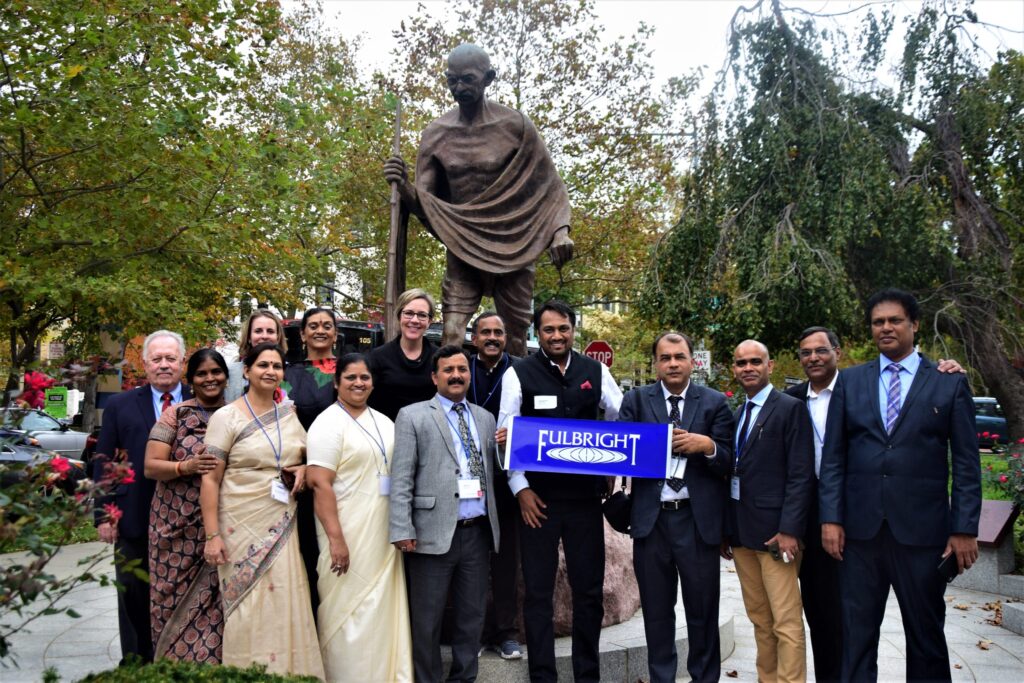
Right photo: 2018 Fulbright-Nehru International Educational Administrators Program participants from India pose with the statue of Mahatma Gandhi at the Embassy of India, in Washington D.C.
India
United States-India Educational Foundation
The United States-India Educational Foundation (USIEF) offers educational advising, fellowship support, and the facilitation of academic dialogue between the United States and India. Since its founding in 1950 as the United States Educational Foundation in India (USEFI), the organization has awarded approximately 20,000 Fulbright, Fulbright-Nehru, and other prestigious scholarships in almost every academic discipline. USIEF has supported outstanding leaders including Vikram Seth, an award-winning Indian novelist; Purnima Mane, reproductive health expert and former president and CEO of Pathfinder International; and Tejendra Khanna, former Lieutenant Governor of Delhi.
In 2008, the organization adopted a new name: the United States-India Educational Foundation. This name signals a new identity, a “commitment from the Government of India to join the United States as an equal partner in the funding and governance of the Fulbright Program and also reflects the true bi-national nature of the program,” says Adam J. Grotsky, the Executive Director of the United States-India Educational Foundation.
“It is a privilege to spearhead the largest Fulbright Scholar Program in the world. While merit is the prime criteria for selection, the United States-India Educational Foundation has implemented a multi-pronged approach to bolster candidate diversity through extensive and targeted outreach and promotion of the Fulbright Program in underserved regions of India, at minority serving institutions, and at academic forums like the Women’s Science Congress. As a result, the Fulbrighters from India represent the great diversity of this country, with about 18% coming from underserved regions, 13% from religious minority groups, and with 50% of our fellows being women.” — Adam J. Grotsky, Executive Director of the United States-India Educational Foundation
Western Hemisphere
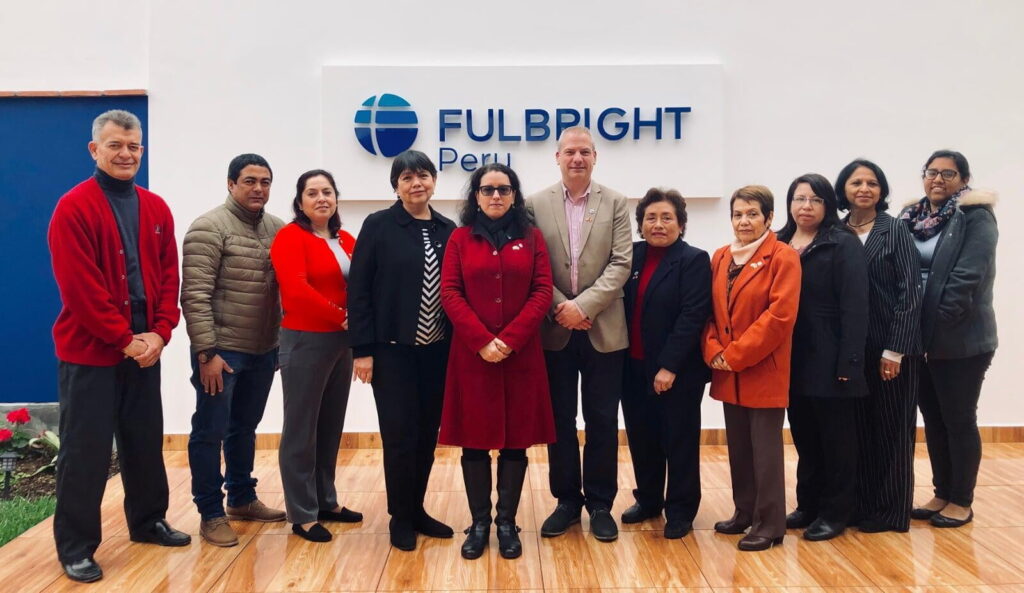
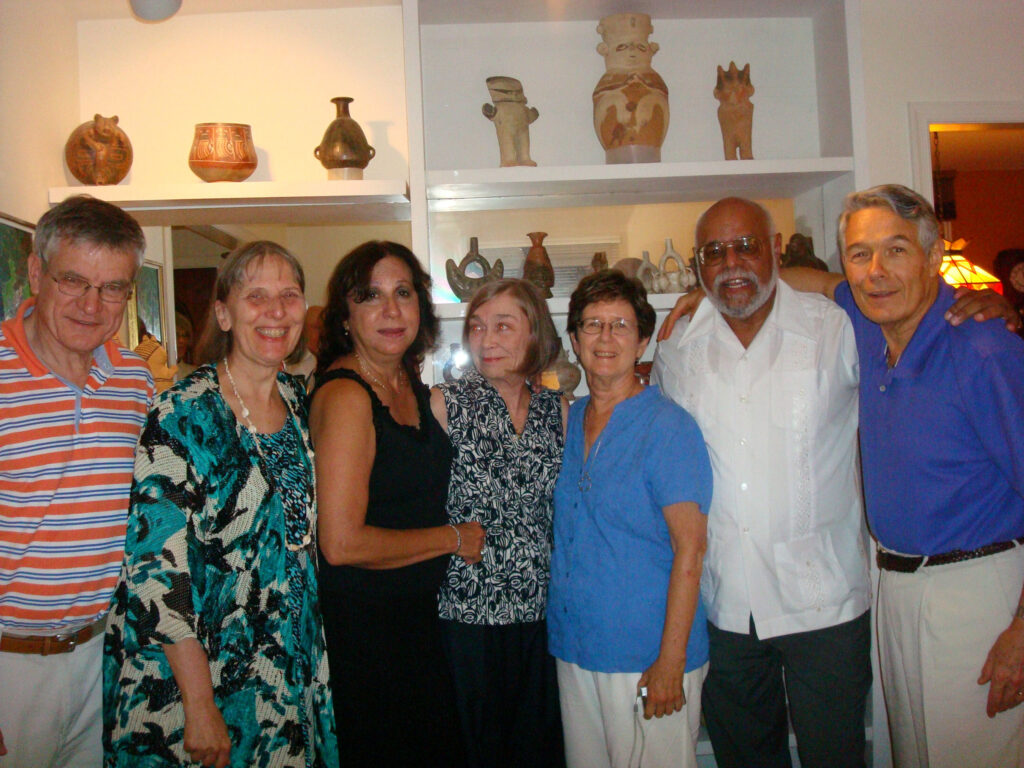
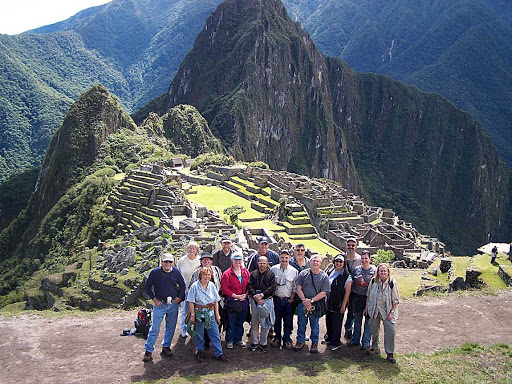
Center photo: Barry Heyman (far right), 1966 Fulbright U.S. Student to Peru, hosts Fulbright Peru reunions with his cohort, which include internal affairs professionals and those with active connections to Peru.
Right photo: 14 educators from nine Montana tribal colleges, five units of the Montana University System, and two tribal colleges in South Dakota and Wisconsin deepened their understanding of indigenous cultures and society in Peru and Guatemala through Fulbright in 2004.
Peru
The Fulbright Commission in Peru
Since its founding in 1956, Fulbright Peru has awarded more than 2,000 scholarships to Peruvian citizens and more than 1,200 scholarships to U.S. citizens to study, teach, and conduct research. Fulbright Peru has supported outstanding leaders, including Beatriz Merino, the first female Prime Minister of Peru; Francisco Sagasti, interim president of Peru; and Jaime Saavedra, Global Director of Education at The World Bank.
“Diversity and inclusion are top priorities for the Commission in Peru, and we have made several changes to the way we conduct outreach activities and manage selection processes. Now, not only do we appreciate the skills and achievements of our candidates but recognize the challenges they had to face to become who they are. This change has led to an increase of candidates from diverse backgrounds and life paths, bringing with them innovative solutions and an enormous potential to contribute.
International education can be life-changing for individuals who are willing and able to break the glass ceiling that affects communities. As such, carrying out activities as part of the Fulbright Program to Peru offers grantees an opportunity to rethink what ties us together as a society, how we encounter difficulties, and explore possibilities to innovate and inspire. The U.S.- Peru cooperation has funded several initiatives leading to support vulnerable communities and has shown its commitment to shared values and advancing an agenda for education and mutual understanding.” — Dr. Laura Balbuena, Executive Director of Fulbright Peru
Fulbright: Past and Present
Dig deep into the University of Arkansas’ University Libraries Digital Collection, which includes photographs, binational commission agreements, and reports from the United States and around the world.





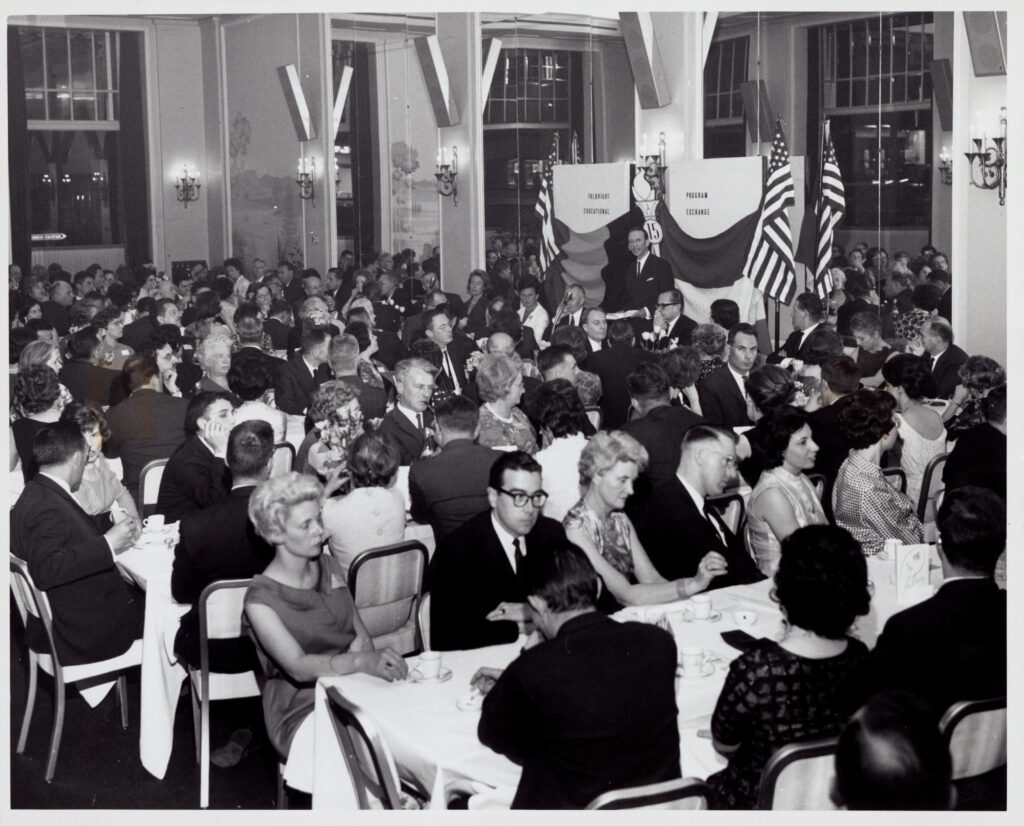
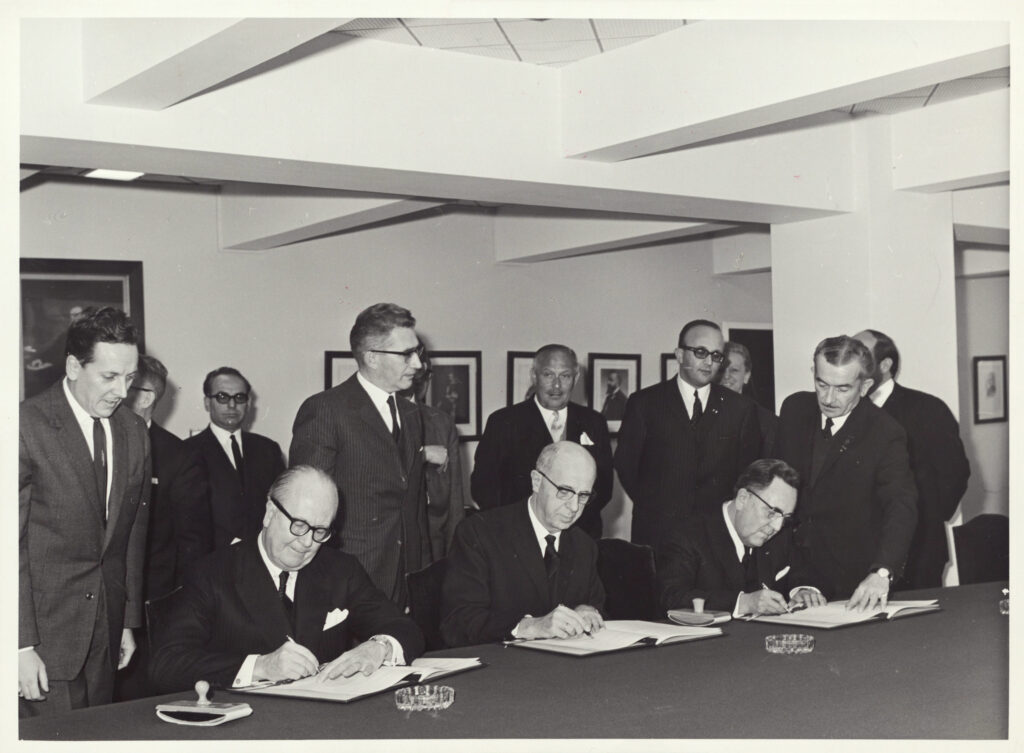
Photo credits: Bureau of Educational and Cultural Affairs Historical Collection (MC 468), box 342, Special Collections, University of Arkansas Libraries, Fayetteville.